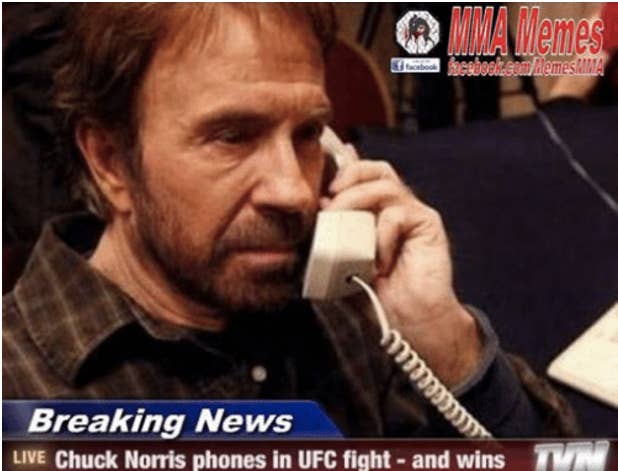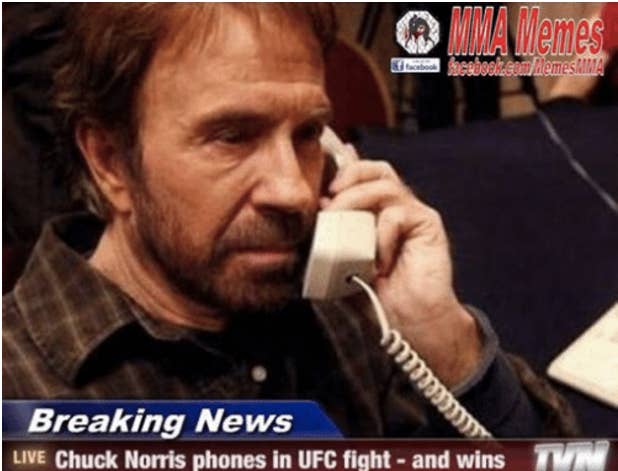
A concept imagined from an unlikely source, memes have emerged as one of the primary methods of communication on the internet. Whether they’re being shared by your favorite rapper, family member, or politician, memes have permeated pop culture in an almost meta fashion. Anything can become a meme—even people, and if you’re really lucky, becoming a meme can turn you into a celebrity.
Once upon a time, memes were just thought to be the weird pictures that parts of the internet made to entertain themselves. Today, they’re part of everyday social media interaction, used and shared and consumed every minute. They can take something as innocent as children’s show Arthur and meme the images into something that results in a reprimand from the series’ creators, or mock the entire concept of owning AirPods.
The rise of the meme in popular culture coincides with the increased presence of the internet and social media in people’s lives. As more and more time is spent online, memes have become the perfect vehicle for facilitating information, humor, and opinion. Evolving from basic image edits made to make people laugh into rhetorical devices capable of disseminating information to millions of people, memes have established themselves as one of the most important mediums today. This is the evolution of the meme.
What is a meme?
Chuck Norris Jokes | The 50 Best Chuck Norris Facts & Memes (Page 3) pic.twitter.com/DNQMbfjUnj
The easier question is, what isn’t a meme?
According to an analysis by Smithsonian Magazine, memes can be anything something as monumental as a belief in God to catchphrases or idioms to a type of music can be a meme.
“The hula hoop is not a meme; it is made of plastic, not of bits,” the publication says. “When this species of toy spread worldwide in a mad epidemic in 1958, it was the product, the physical manifestation, of a meme, or memes: the craving for hula hoops; the swaying, swinging, twirling skill set of hula-hooping. The hula hoop itself is a meme vehicle. So, for that matter, is each human hula hooper—a strikingly effective meme vehicle.”
The generally understood definition of a meme today is anything that’s a joke on the internet, usually wrapped in a layer of self-deprecation, sarcasm, or irony. Memes can be image, video, or text based, and can be reproduced, republished, or reinterpreted by others, leading to an entirely different rhetorical message.
Who invented memes?
Richard Dawkins, noted Smart Guy and atheist, first coined the term “meme” in 1976, in his book, The Selfish Gene. In this first iteration, the idea was that ideas and thoughts were as self-replicating and adapting as the genes found within all forms as DNA. This adds up, given the way memes today are reimagined and reformatted.
What were the first memes?
Once upon a time, memes were an obscure form of early internet humor, finding early homes in various forums and sites like Ebaum’s World and 4chan. With limited content creation tools, early memes revolved around singular pictures and concepts: I Can Haz a Cheezburger cats and O Rly? Owl are two of the earlier examples. Chuck Norris Facts (hyperbolic statements about Chuck Norris’ supposed demigod status that were all the rage in the mid-2000s) are another early example of memes.
Top Text/Bottom Text
What followed were what top text, bottom text memes, featuring a picture either on a colored pinwheel background or a humorous photo with a single sentence, two-step punchline: Philosoraptor pondered life’s meaningless questions, while Good Guy Greg pointed out the little things that can leave the right impression.
Rage Comics
Supplementary to top text, bottom text were Rage Comics, multipanel illustrations that would depict a frustrating, ironic, or somehow hilarious real-life situation. The minimal amount of effort required to create the comics (the vast majority were constructed in Microsoft Paint) helped make them more accessible, contributing to their virality and status as a commonly-understood method of communication, with each face (such as the now-ubiquitous Trollface) becoming recognizable regardless of language.
Pivot to Video
In 2007, memes took on a new lifeform: videos. Looking outside of picture-based memes, the concept of Rick Rolling became a recognized phenom, and was one of the first video-based instances of humor being passed around the internet.
All of these early memes found their home on 4chan and then started to filter out onto Tumblr, where they began to reach almost-mainstream status.
Tumblr
happy 3 years to this iconic vine pic.twitter.com/ZI9svqyu0O
With Tumblr’s emergence as a social media platform also came memes’ rise to the mainstream. A lot of meme content on Tumblr was ripped directly from the aforementioned original sources, and thus reached a wider audience.
Accounts dedicated solely to the posting of memes were created and accumulated mass followings, a practice that would come into play with the rise of Facebook and Twitter accounts later on. With an audience just small enough to feel like they were the only ones in on the joke and one large enough to cater to, memes, and the creation of them, started to become more accessible.
“I only ever consumed Tumblr content passively, but I primarily recall it as the vehicle through which memes—which I was familiar with as a trawler of message boards since my parents got us dial-up internet in the sixth grade—became a mainstream medium,” writes Victor Luckerson of The Ringer.
In addition, the site’s reblog feature played a huge part in content and ideas being transformed, remixed and reinterpreted—the central concept of memes. Catchphrases like “what is air?” and “GPOY” became part of common vernacular, with the latter being referenced by Childish Gambino on “Earth (The Oldest Computer) from 2013’s Because the Internet.
Viral Videos
Rick Rolling opened up the door for more video-based memes, as did the creation of YouTube. The site’s emergence as a legitimate content-hosting platform led to the increase of video memes, starting with early examples like “Numa Numa” and “Chocolate Rain” and eventually giving way to movement-based memes like the Harlem Shake, which invited people to literally join in on trending content.
Pivot to Twitter
In 2009, Twitter began to rise as the “new” social network. With its retweet feature (similar to Tumblr’s reblog feature), the platform became an ideal incubator for memes.
With its instant-reaction format, photo-capability added in 2011, and a new demographic (in 2013, 42 percent less teenagers were considering Facebook their most important social network), Twitter as a meme vehicle began to flourish. As with Tumblr beforehand, the initial memes were stolen, posted by accounts that have since become known as Tweetdeckers.
In 2015, Twitter added a native video upload feature, as well as the ability to quote tweet, paving the way for the next iteration of memes as multilayered, multimedia presentations.
At the forefront? A six-second video capturing app.
Vine
A timeline of memes wouldn’t be complete without mentioning Vine, which, during its short life, arguably transcended YouTube as the foremost producer of video-based memes. With only six seconds and no native upload feature, creators were forced to be innovative, figuring out workarounds by either recording part of the referenced content on a computer screen or recreating it themselves. Early Vine memes were often as simple as pronouncing things wrong.
Once the app was updated so that users could upload videos not created within the platform, Viners were able to remix content with elements that had previously entered the public consciousness, which more often than not were also Vines (think about how many you’ve seen a Vine with “that is not correct” one slapped on at the end). The majority of Vines considered iconic today came from this second wave of content creation, and we’re all better off for it.
How have memes evolved?
Other than moving from a concept that imagined the evolution of human thinking to making pictures of an extremely muscular Kim Kardashian, memes become a formative part of public discourse.
“Memes and pop culture go hand-in-hand now,” wrote Kaitlyn Tiffan in The Verge. “They don’t sit in subforums and Subreddits; they crop up in group chats and on your local diner’s Instagram account.”
Memes have gone from a somewhat underground form of casual humor to becoming an everyday part of social interaction. They still get used as comedic devices more often than not, but they’ve also become such a recognized communicative method that they’re capable of spreading ideas, opinions and information.
It could be argued that memes are at least partially responsible for the election of Donald Trump, weaponized as a PR method to spread misinformation as well as establish his candidacy itself as a meme vehicle.
What are “normie memes”?
Normie memes are easy to identify by one simple characteristic: brands are using them. Once they enter into the realm of corporate consumption, they’ve usually achieved normie status, a condition that officially renders the meme obsolete. If it’s on Ellen, it’s a normie meme.
“Charlie Bit My Finger” is a good example of what an OG normie meme is: something that your random Midwestern relative would find funny.
What are “dank memes”?
Know Your Meme, however, defines a dank meme as a term “used to describe online viral media and in-jokes that are intentionally bizarre or have exhausted their comedic value to the point of being trite or cliché.”
What is the future of memes?
Does that mean memes are dying? Not quite. A terrible Twitter meme might die out in three days, but a squirrel flying in an airplane soundtracked by Evanescence's “Bring Me to Life” will never lose comedic value. “Damn Daniel” spoken out loud sounds like nails on a chalkboard, but slapping a crying Michael Jordan on whoever is the loser of the moment will never, ever get old. And lest we forget that the infamous “What are those?!” meme landed a reference in 2018’s Black Panther.
Memes will continue to evolve and expand, just as they always have. The methods in which they’re consumed may change, and the ability of some to remain relevant may decrease, but given the way that they’ve taken a foothold in the public’s conscious, memes are here to stay.



